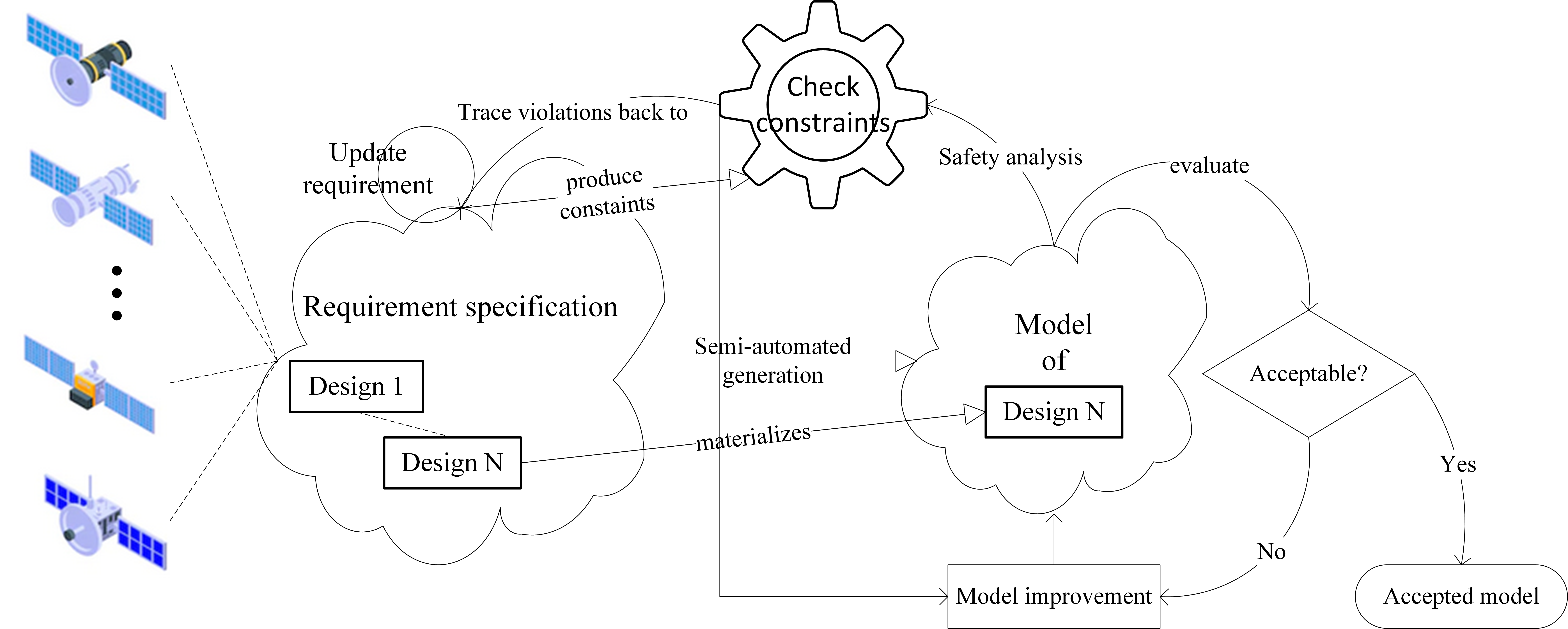Model-based Safety Analysis of Requirement Specifications

This work introduces a semi-automated approach for the generation of a formal model from a requirements specification. While the requirements provide a static definition of the anticipated functionality, which is independent from a particular design, the model is intended to materialize an acceptable design solution (if any) expressed in the used modeling language and its execution semantics. A safety analysis is then performed on the generated model; if a safety constraint is violated, our approach aims to trace the violation found to the model and to the requirements specification, for guiding the necessary improvement.
In essence, we diminish the cost of model-based design by generating a model skeleton directly from the system requirements, which enables to eventually assess their correctness through the safety analysis of gradually improved system models. Our work aims to the efficient analysis of system safety, for a set of functional requirements coupled with specifications of failure, detection, isolation and recovery (FDIR). We rely on the ontology-based requirements specification approach from our previus work of Ontology-based specification and analysis of requirements*; in current work, that approach is extended with novel ontology-based reasoning techniques (i) for automating the generation of model skeletons in the SLIM formal language and (ii) for visualizing the requirements specification, in order to enable the analysis of safety violations and to trace them back to the relevant requirement specifications.
The concrete research contributions of this work are:
(i) an extension of our ontology-based boilerplate language*, for the specification of FDIR requirements
(ii) the model-based representation of system requirements, for the analysis of system safety, including (a) a visualization of the specification and (b) the automated generation of a model skeleton
(iii) a technical approach for (a) the safety analysis of a system design given by a model skeleton and (b) the traceability of safety violations to the requirements through their visual representation from (ii)
(iv) an application of our model-based safety analysis to a set of requirements for an industrial-scale star tracker system
We have build a visualization that follows this approach. The tool operates by first importing a predefined set of boilerplate requirements from a text file alongside a user-defined domain-specific ontology. These inputs undergo thorough semantic analysis, leading to the transformation of both the requirements and the domain-specific ontology concepts used within the boilerplate placeholders into a model skeleton.
* Semantic Modeling and Analysis of Natural Language System Requirements
The tool, along with the original boilerplate requirements, the user’s domain-specific ontology, and the final model tailored for system safety analysis, are accessible in the "Source Code" link below. Appendix A.2, referenced in our work, is accessible via the "View Document" link below.